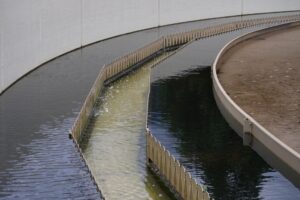02/14/2018 | Drinking Water | 4 MINUTE READ
Preventing Pesticide Contamination of Drinking Water

Pesticides serve an important role in industrial agriculture, allowing society to meet the growing global demand for food. They protect crops against diseases, weeds, fungi and insects. According to the Environmental Protection Agency’s latest report on pesticide usage, the US accounts for nearly 20% of the total world pesticide expenditures, which include herbicides, insecticides and fungicides.
Pesticides contain chemicals, some of which are toxic and harmful to humans. Some studies have shown that pesticides may be linked to diseases and health problems, with agricultural workers showing higher rates of Parkinson’s disease, cancer, and reproductive issues. But what is the impact of pesticides on the general public, people who don’t work with pesticides regularly?
Are there pesticides in US tap water?
Ground water and surface water represent the majority of source water for drinking water treatment plants. Both sources can be contaminated with pesticides. Agricultural runoff can carry pesticides into surface water, including lakes, rivers, and streams. Additionally, pesticides absorbed by soil may leach into groundwater. Finally, wind may carry pesticides sprayed via aerial application away from target crops and into surface water sources.
Studies have shown that pesticides with greater water solubility pose the highest risk for drinking water contamination. Atrazine, a chemical identified as hazardous to human health, is water soluble and can contaminate groundwater. The European Union banned Atrazine in 2005.
Monitoring requirements for pesticides in tap water
The United States has strict regulations regarding the levels of pesticides in drinking water. Following the Safe Drinking Water Act in 1974, The Environmental Protection Agency (EPA) set maximum contaminant levels or MCLs for various pesticides. The EPA has also established human health benchmarks for pesticides depending on short or long-term exposure.
To comply with EPA regulations, businesses are often required to monitor wastewater effluent or stormwater runoff. Potential polluters monitor pH, conductivity, dissolved oxygen, and other parameters to ensure that the water they release into the environment is in line with EPA standards.
Public data from surveys of groundwater and surface water contamination by pesticide residues is scarce. The only recent publication available showed that in April 2017, small traces of neonicotinoid, a pesticide known as the bee-killer, were detected in tap water across the country. However, there is no current evidence of neonicotinoid posing a risk to human health. No studies have shown that the current MCLs are ineffective, leading to human health hazards in United States.
How to find out about your tap water quality
The EPA requires local water companies to monitor water for pesticides. You can contact your local water company to request information on the quality of your tap water. It is also common for water companies to send annual water reports to consumers. You can find out more about the quality of your local drinking water by accessing the EPA consumer confidence reports. Simply click on the map or use the search box to narrow your search.
You can take precautions to lower your daily exposure to pesticides: A water filter or a filter jug will remove pesticide residue from tap water. Make sure you change your filters regularly to ensure their efficiency. Indicator lights on filters and jugs can tell you when it’s time to replace your filers. These indicators rely on small conductivity sensors, which measure the amount of ions present in water. If you are concerned about drinking water and your health, you can also consult with your doctor.
Guest blogging
This guest blog was written by our friends at Water Logic International. If you would like to contribute a guest blog to sensorex.com, please contact us with the subject line “Comment About Website.”
Posted by Dominic O'Donnell on February 14, 2018
Sensorex is a global leader in the design and manufacture of quality sensors for water quality and process applications. The company offers more than 2000 sensor packages for pH, ORP, conductivity, dissolved oxygen, free chlorine, chlorine dioxide, UV transmittance and other specialty measurements, as well as a full line of sensor accessories and transmitters. Its expert technical support engineers solve analytical sensor challenges with custom designs and off the shelf products.




